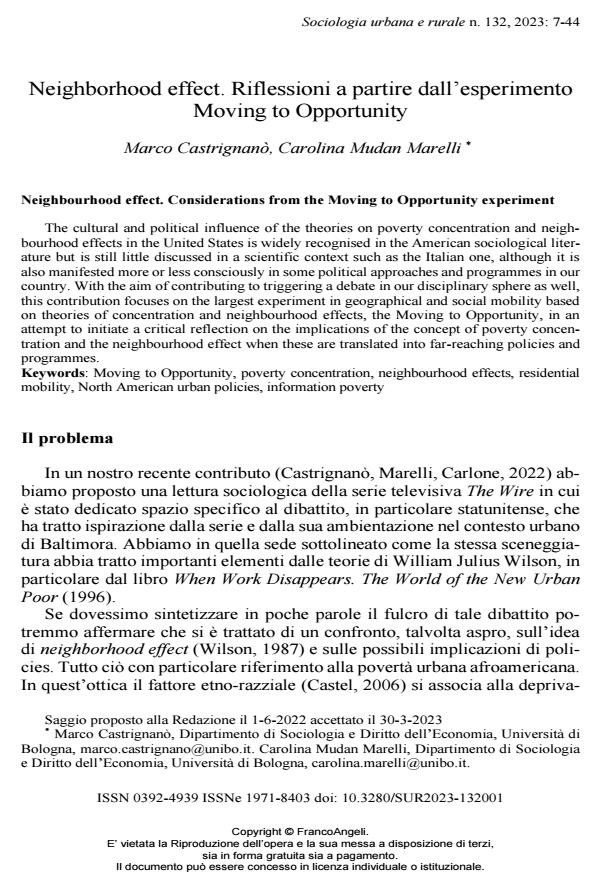Neighbourhood effect. Considerations from the Moving to Opportunity experiment
Journal title SOCIOLOGIA URBANA E RURALE
Author/s Marco Castrignanò, Carolina Mudan Marelli
Publishing Year 2023 Issue 2023/132
Language Italian Pages 38 P. 7-44 File size 406 KB
DOI 10.3280/SUR2023-132001
DOI is like a bar code for intellectual property: to have more infomation
click here
Below, you can see the article first page
If you want to buy this article in PDF format, you can do it, following the instructions to buy download credits

FrancoAngeli is member of Publishers International Linking Association, Inc (PILA), a not-for-profit association which run the CrossRef service enabling links to and from online scholarly content.
The cultural and political influence of the theories on poverty concentration and neighbourhood effects in the United States is widely recognised in the American socio-logical literature but is still little discussed in a scientific context such as the Italian one, although it is also manifested more or less consciously in some political approaches and programmes in our country. With the aim of contributing to triggering a debate in our disciplinary sphere as well, this contribution focuses on the largest experiment in geo-graphical and social mobility based on theories of concentration and neighbourhood ef-fects, the Moving to Opportunity, in an attempt to initiate a critical reflection on the im-plications of the concept of poverty concentration and the neighbourhood effect when these are translated into far-reaching policies and programmes.
Keywords: Moving to Opportunity, poverty concentration, neighbourhood effects, resi-dential mobility, North American urban policies, information poverty
Marco Castrignanò, Carolina Mudan Marelli, Neighborhood effect. Riflessioni a partire dall’esperimento Moving to Opportunity in "SOCIOLOGIA URBANA E RURALE" 132/2023, pp 7-44, DOI: 10.3280/SUR2023-132001